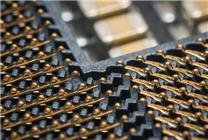Intel’s 14A Process: Navigating the Future of Semiconductor Technology
Summary:
- Intel is set to mass-produce the 18A process by the end of this year, marking a significant advancement in its GAA-structure transistor technology.
- The fate of the 14A process hinges on securing major customers by 2026, with Intel expressing confidence in overcoming potential obstacles.
- The 14A process promises significant performance improvements, including enhanced energy efficiency and innovative transistor architecture.
On September 10, Intel announced plans to initiate mass production of its 18A process by the close of this year. This development signifies the company’s inaugural foray into GAA (Gate-All-Around) transistor technology, a move that could redefine its competitive edge in the semiconductor landscape. As the tech giant prepares to embark on this breakthrough, industry observers remain focused on the implications for the subsequent 14A process, set to take the stage next year.
Intel CEO Chen Liwu has previously articulated concerns regarding the viability of the 14A process, especially if major customers do not materialize by 2026. This assertion has triggered discussions about the potential halt in Intel’s progression toward advanced semiconductor technologies. Nevertheless, the company maintains a positive outlook, reducing fears by emphasizing that the likelihood of lacking significant clientele is low, and highlighting the expected capabilities of the forthcoming 14A process.
Recent comments by John Pitzer, Intel’s Vice President of Planning and Investor Relations, during the Goldman Sachs Media and Technology Conference, further instilled confidence. Pitzer asserted that Intel has acquired critical insights from prior experiences, positioning itself to navigate obstacles more effectively. The company’s proactive approach reflects a commitment to not just meet the demands of the industry, but to innovate and excel.
The development of the 18A process has focused primarily on optimizing Intel’s existing product offerings. This approach stands in contrast to that of the 14A, which is being designed in collaboration with external partners, targeting high-performance computing (HPC) and mobile applications from the outset. By tailoring the 14A process for specific market needs, Intel aims to enhance its relevance in these rapidly evolving sectors.
Additionally, Intel’s foundry team is setting ambitious goals, aiming for break-even status by 2027 without relying heavily on extensive external contracts. This strategy emphasizes self-sufficiency in production, ensuring that the company’s operations remain viable amid market fluctuations.
Intel’s roadmap indicates that the 14A process will leverage advanced lithography technology, specifically the High NA EUV lithography machine Twinscan EXE: 5200B series, which is set to debut in this process. This state-of-the-art equipment comes with a hefty price tag, approaching $400 million, representing a cost increase of 1.5 to 2 times that of current EUV systems. Despite this escalation in investment, the anticipated enhancements in the 14A process could significantly justify the expense.
The benefits of the 14A process are projected to be substantial. Intel estimates a potential performance per watt increase of 15-20%, coupled with a reduction in power consumption by 25-35%. Furthermore, a revamped transistor architecture aims to boost operational speed without compromising area or energy efficiency. These advancements align perfectly with industry demands for greener, quicker, and more efficient processing solutions.
In conclusion, as Intel approaches the launch of its 18A process and looks ahead to the pivotal 14A process, the company’s strategy reflects a blend of innovation, collaboration, and awareness of market dynamics. With a clear plan in place and optimistic forecasts, Intel is poised to regain its status as a leader in semiconductor technology, navigating the challenges and opportunities that lie ahead.
This editorial approach provides a comprehensive view of Intel’s journey whilst remaining optimized for search engines and readability.








